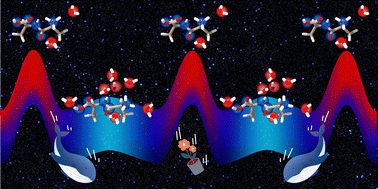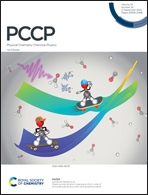The hitchhiker's guide to dynamic ion–solvent clustering: applications in differential ion mobility spectrometry†
Abstract
This article highlights the fundamentals of ion–solvent clustering processes that are pertinent to understanding an ion's behaviour during differential mobility spectrometry (DMS) experiments. We contrast DMS with static-field ion mobility, where separation is affected by mobility differences under the high-field and low-field conditions of an asymmetric oscillating electric field. Although commonly used in mass spectrometric (MS) workflows to enhance signal-to-noise ratios and remove isobaric contaminants, the chemistry and physics that underpins the phenomenon of differential mobility has yet to be fully fleshed out. Moreover, we are just now making progress towards understanding how the DMS separation waveform creates a dynamic clustering environment when the carrier gas is seeded with the vapour of a volatile solvent molecule (e.g., methanol). Interestingly, one can correlate the dynamic clustering behaviour observed in DMS experiments with gas-phase and solution-phase molecular properties such as hydrophobicity, acidity, and solubility. However, to create a generalized, global model for property determination using DMS data one must employ machine learning. In this article, we provide a first-principles description of differential ion mobility in a dynamic clustering environment. We then discuss the correlation between dynamic clustering propensity and analyte physicochemical properties and demonstrate that analytes exhibiting similar ion–solvent interactions (e.g., charge–dipole) follow well-defined trends with respect to DMS clustering behaviour. Finally, we describe how supervised machine learning can be used to create predictive models of molecular properties using DMS data. We additionally highlight open questions in the field and provide our perspective on future directions that can be explored.

- This article is part of the themed collections: 2022 PCCP HOT Articles and PCCP Reviews


 Please wait while we load your content...
Please wait while we load your content...